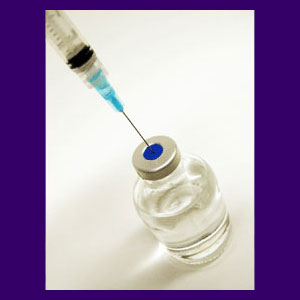
Back pain injections can be used for diagnostic and pain management purposes, as well as for other specific therapeutic goals.
Most back pain injections are also commonly called epidural injections, although not all varieties of injection therapy qualify to be named such. Epidural spinal therapy started in the early 1900s and is most often used to treat lower back pain. Epidural injections are given directly into the symptomatic area of the back via hypodermic needle as a minimally invasive outpatient procedure.
Other types of injection treatments may be introduced into the superficial or deep back muscles. Still other types of injection may be used for diagnostic purposes or to place organic irritants into regions in order to elicit a natural healing response. There are injections designed to freeze tissues, treat or cause chemical reactions and even dissolve disc material using ozone gas. There are currently many injection techniques common in the dorsopathy sector, with new ones being developed every year.
Varieties of Back Pain Injections
Spinal injections are most often a combination of corticosteroids, anesthetics and flushing solution. The mix will reduce inflammation due to irritating proteins leaking from a ruptured disc in about 50% of patients.
Other varieties of injections include nerve blocks, which are used to relieve symptoms of chronic pain from a wide range of causations.
Ozone discolysis uses special gas to create a chemical reaction inside the nucleus of a bulging disc in order to relieve suspected compression of nearby neurological structures.
Botox is effective for solving many muscular back ache concerns and is especially known for treating muscular spasms long-term.
Finally, prolotherapy is also becoming a popular treatment option for those patients who are looking to increase their body’s own healing capacity using this controversial therapy modality.
Injection Procedure
Epidural injections are typically given while the doctor views the needle under specialized live x-ray equipment. It is critical that the doctor sees exactly where the needle is going, before injecting the medicine into the back. The procedure is fast and not terribly uncomfortable.
If your doctor is not using fluoroscopy for your epidural treatment, there is a good chance that the medicine will not get to the exact location it is needed. In this case, you might want to consider going to a more detail-oriented pain specialist.
Pain relief may last from a week to a few months on average. Multiple injections may be given over a period of time to keep pain relief maximized.
Results for Back Pain Injections
Epidural injections are most often prescribed for chronic back pain which has not responded to more conservative therapies. Spinal injections for back pain are most commonly used for herniated discs, but are also prescribed for spinal stenosis, degenerative disc disease and virtually any other stubborn pain condition in the back or spine. Treatment statistics are acceptable for herniated disc patients, but are mostly inconclusive for many other back pain conditions.
If you are on the path towards back surgery, you might want to consider trying epidural injections for back pain first. They will not likely resolve an underlying structural problem, but will control your pain while you work towards a true nonsurgical cure. The verdicts on this treatment are mixed, but compared to surgery, it is worth the effort to try. Just remember that this is yet another form of symptomatic back pain treatment for most patients.
Recently, pain specialists have glorified treating back pain using powerful anesthetics and nerve blocking agents. While this therapy might be humane for some patients, it can cause side effects and addictions in others. Be extremely careful about failing into an ongoing program of pain management using these powerful drugs!
Additionally, be wary of the risks of injection therapy, especially those associated with spinal epidural injections. Spinal fluid leaks, infections, nerve injury and other complications are possible and actually more common than many doctors might have you believe. Be sure to discuss all the risks before treatment to avoid the possibility for a nasty surprise afterwards.




